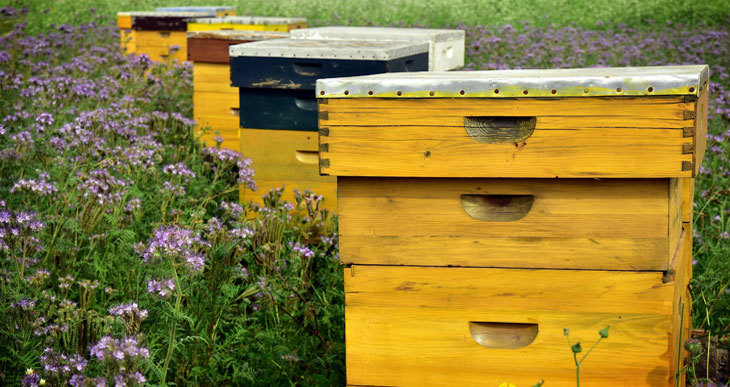How to Move a Beehive

Moving beehives is my least favorite part of beekeeping. Most hobbyists don’t often have to move their hives, but occasionally an issue will arise where it will need to be done. After hearing about several of these moves gone wrong, I decided I needed to write this how-to guide.
What You Need to Know
There’s a general rule in beekeeping that when you are moving a hive distances less than 3 miles, you should move it only 3 feet at a time. Failure to abide by this rule will result in the forager bees becoming confused. When this happens, they will go back to the original location of the hive and possibly die out.
Should you need to move your bees more than 3 miles, be sure to move them after nightfall or early in the morning. This will ensure that you are moving the hive before the foragers start working. Failure to wait until after foragers have returned to the hive increases the risk that you will leave some foragers behind.
Moving your bees 3 feet at a time, allows you to move them at any time of day. My preference is to move them in the middle of the day. At this time, all the foragers are out working, and as a result, the hive is much lighter. Of course, if you have help moving your hives, you could do so during the off-peak hours.
Always suit up.
As expected, bees are not usually happy about moving. This is true even in the daylight hours. At night, you may come across even angrier bees. Consider how you would feel if someone woke you up by moving your house in the middle of the night! The same goes for bees. Additionally, at night, bees are more likely to crawl than fly, and guards are much quicker to sting. Regardless of whether you have sealed the hive (more information on that is included below), you should still suit up just in case of a “bee leak.”
Moving Your Hive Less Than 3 Miles
Moving your hive 3 feet each day across your yard is not always practical or ideal for your needs. it would take too long, or possibly the topography of your yard renders it impossible. In these situations, it is recommended that you first move the hive more than 3 miles away. Allow a day or two for your bees to reorient themselves, and then return the colony to your desired location.
Moving Your Hive More Than 3 Miles
When moving your hive a greater distance, I propose you do so after dark or in the early morning hours before the departure of your foragers. Follow the steps below to help achieve optimal results.
Step 1: Block the hive entrance. To do this, you can use a block of wood, a piece of screen, or even some rags and tape. Just make sure whatever you decide to use is secure and has no possibility of bee leaks. Additionally, ensure that you have blocked the top of the hive as well. Finally, check for any cracks between your boxes — for example, the notch in your inner cover. This can sometimes happen with old equipment that has become warped. Remember, bees might escape from even the smallest of cracks. On the off chance, I move my hives at night; I will block the entrance with a piece of wood. When I move my hives during the day, I substitute the wood for a screen or some rags. These materials are more breathable than wood. Making sure that some air can get through to the bees inside is imperative. Failure to do so will not only risk suffocating them but could also subject them to very high temperatures. This would also lead to their demise.
Do not leave the openings blocked without some form of ventilation for more than an hour. While transporting your confined bees, make sure they are kept cool and dry. Avoid placing the hives next to watering devices or in direct sunlight.
Step 2: Make use of ratcheting straps to secure your beehives. Doing this will keep your hive bodies together in situations where moving them is difficult.
Step 3: In addition to securing the hive itself, make sure to secure them to whatever vehicle or device you are using to transport the hives to ensure they don’t tip over or fall off.
Step 4: The minute you get your hive set up in the new location, remove the blockage from the entrance.
Swarms
I feel it is essential to address newly caught swarms. Should you find yourself in the situation of a new swarm, know that you have a lot more leeway when it comes to moving them. They have not yet explored their surroundings and therefore will not become easily disoriented. When you catch your new swarm, you are going to want to move them far away from their original location. Failure to do so will find them returning to their original nest. Once you have taken them away from their old home, you can place them on your property to your desired location. Remember, you don’t want to keep them away for more than a day or two.
Conclusion
I, Matthew Davies, hope that this little guide will be helpful to others that are intending on moving their beehives. It takes a lot of time and patience, but it can be done. The most important thing to remember is to block their entrance/exit and to get them moved as fast and efficiently as possible. Never forget to remove the block from the entrance/exit, or you will not be a happy beekeeper. I wish you the best of luck. Do not hesitate to ask for help from your local beekeeping organization if you need it.